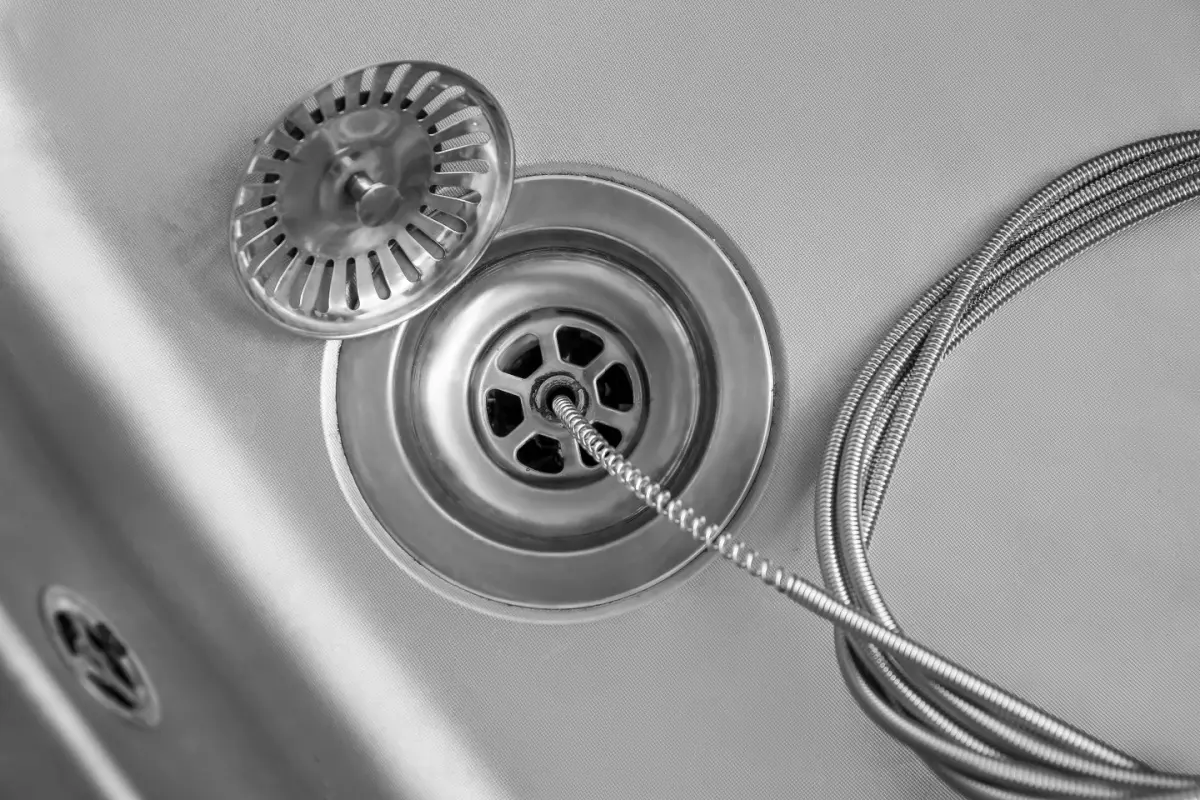If your drains keep clogging no matter what you try, the problem might be deeper than it looks. Plungers and drain snakes can help with minor blockages, but they often leave behind the buildup that causes clogs to return.
Hydrojet drain cleaning offers a more effective solution. It uses high-pressure water to clear out grease, sludge, and even tree roots, leaving your pipes thoroughly cleaned from the inside.
Hydrojet drain cleaning is a professional plumbing method that uses a high-pressure stream of water to clean the inside of pipes. The water pushes through a specialized hose and nozzle, allowing it to break up and flush out debris, grease, scale, and even tree roots.

Unlike traditional snaking, which only clears a narrow path through a clog, hydrojetting cleans the full diameter of the pipe. It removes buildup that sticks to the pipe walls and often causes recurring blockages. This includes everything from hardened soap and food waste to mineral deposits and sludge.
Because it uses only water, water jetting is also a chemical-free option that’s safe for the environment and your plumbing system when done correctly.
Hydrojetting is safe for most plumbing systems when handled by a trained professional. It’s widely used in both residential and commercial settings for tough or recurring clogs.
The process starts with a video inspection. A hydrojet plumbing expert checks the inside of the pipes to locate the blockage and make sure the system can handle high-pressure cleaning.
Next, a hose with a specialized nozzle is inserted into the drain. Pressurized water, usually between 1,500 and 4,000 PSI, is released in multiple directions to break up clogs and flush out debris. The nozzle sprays forward to clear the path and backward to scrub the interior of the pipe walls.
This method removes years of buildup in one session. After cleaning, a second inspection may be conducted to confirm that the pipes are clear and functioning correctly.
So, why do so many pros swear by hydrojetting?
The high-pressure water doesn’t just push clogs out of the way. It scrubs the entire inner surface of the pipe, removing grease, sludge, and mineral buildup that other methods leave behind.
Because the pipe is fully cleared, it takes longer for debris to build up again. This means fewer clogs over time and less frequent service calls.
Hydrojetting relies only on water. It’s a safer choice for your plumbing system, your household, and the environment.
It can break through roots, compacted debris, and years of buildup that plungers or snakes can’t reach.
When performed by a trained professional, hydrojetting is effective on most modern plumbing systems, including those with PVC and metal pipes.
Not every clog requires a hydrojet, but there are situations where it’s the smartest option.
If your sinks, tubs, or toilets regularly drain slowly or clog without warning, hydrojetting may provide a more permanent solution.
Persistent smells emanating from your plumbing can indicate a buildup of bacteria inside your pipes, which can be removed entirely with drain hydrojetting.
If grease, soap, or minerals are repeatedly clogging your system, pipe jetting can clear them all out in one session.
Outdoor or underground lines with root infiltration often need the power of hydrojetting to break through and clear the obstruction.
When snaking or plunging no longer solves the problem, hydrojetting offers a more effective and deeper alternative.
Even without a current clog, hydrojetting can be used proactively to keep your plumbing system clean and flowing correctly.
Not all drain cleaning methods work the same way. Here’s how hydro-jetting stacks up against other standard options:
| Method | Best For | Pros | Cons |
Plunger | Minor clogs | Inexpensive and easy to use | Not effective for deep or recurring blockages |
| Drain snake | Hair or soft clogs | Suitable for simple, localized clogs | May leave buildup on pipe walls |
| Chemical cleansers | Light grease or soap buildup | Convenient and widely available | Can damage pipes and harm the environment |
| Hydrojetting | Tough or recurring clogs | Deep cleansing, long-lasting results, chemical-free | Requires professional equipment and inspection |
Before scheduling a hydrojet service, learn a few safety precautions and system requirements to ensure the process is both practical and risk-free:
Hydrojetting utilizes high water pressure and should only be performed by a trained professional to prevent pipe damage or injury. Worried about the hydrojet drain cleaning cost? Plumbing financing can help make professional pipe jetting more affordable.
A camera inspection helps identify cracks, corrosion, or weak spots before cleaning begins, ensuring your system is safe for hydrojetting.
When used correctly, hydrojetting is safe for most modern plumbing materials. This includes PVC, copper, and cast iron.
If your plumbing system is old or already weakened, your plumber may recommend a gentler alternative to prevent further damage.
Hydrojetting cannot repair structural damage. Collapsed pipes or significant root intrusions may require excavation or pipe replacement.
An experienced plumber will adjust the water pressure based on your system’s specific needs to ensure a safe and effective cleaning.
Hydrojet drain cleaning is one of the most effective methods for clearing tough clogs and maintaining your pipes in optimal condition. It goes beyond quick fixes by thoroughly cleaning your system with just water and the right equipment.
If you’re dealing with frequent blockages or want a deeper clean that lasts, consider consulting a hydrojet plumbing professional to determine if hydrojetting is the right solution for your home.